- Home
- Japan Private Tours
- Gunma Private Tours
Discover the Best of Gunma Travel: Things to Do, Top Onsen Spots & Your Ideal Gunma Itinerary
Tucked away in the mountains just a few hours from Tokyo, Gunma is one of Japan’s most underrated travel destinations. From steaming hot springs in Kusatsu and Ikaho to outdoor adventures in Mount Tanigawa and Minakami, Gunma offers the perfect balance of relaxation and exploration. Whether you're planning a weekend escape or a multi-day itinerary, this guide to Gunma travel will introduce you to the best things to do in Gunma, top places to visit, and how to craft your ideal Gunma itinerary.
Why Visit Gunma?
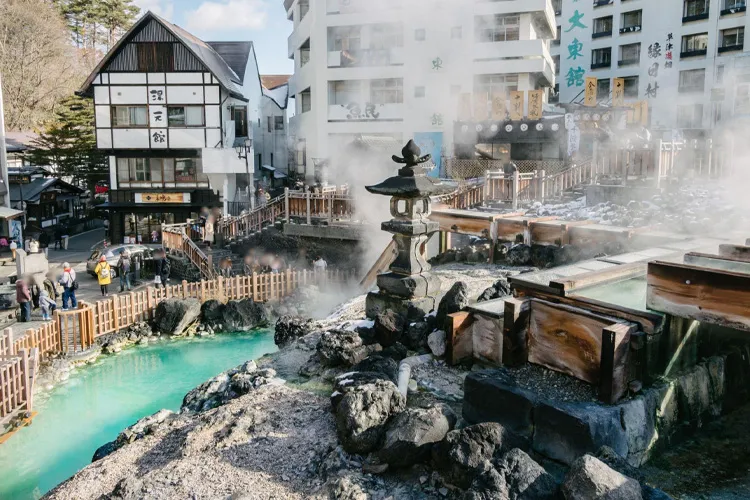
Welcome to Gunma Prefecture, a land where Japan's finest hot springs bubble amidst stunning volcanic landscapes and rich natural beauty. Imagine soaking in mineral-rich waters, exploring picturesque mountain towns, and discovering local traditions. This isn't just a destination; it's a journey into relaxation, adventure, and authentic Japanese charm.
- Ultimate Hot Spring Retreat: Immerse yourself in the therapeutic waters of world-renowned onsen towns like Kusatsu and Ikaho.
- Nature's Embrace: Explore majestic mountains, serene lakes, and vibrant seasonal scenery perfect for outdoor activities.
- Rich Local Culture: Discover traditional crafts, unique festivals, and heartwarming local cuisine.
Quick Guide to Gunma
Ready to plan your Gunma adventure? Here's what you need to know to get started.
Location & Access
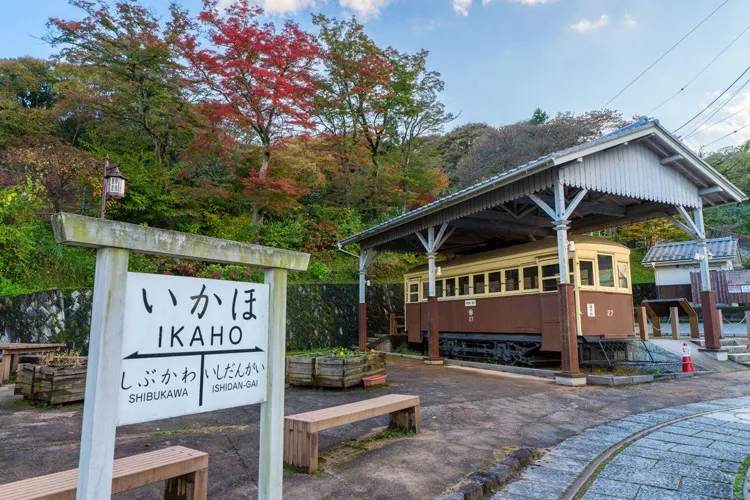
Gunma Prefecture is located in the northwestern part of the Kanto region, easily accessible from Tokyo. Its mountainous terrain is home to numerous hot springs and natural parks.
From Tokyo:
- By JR Shinkansen (to Takasaki): Take the Joetsu Shinkansen or Hokuriku Shinkansen from Tokyo or Ueno Station to Takasaki Station (approx. 50-60 minutes). From Takasaki, connect to local JR lines or express buses to reach specific destinations like Kusatsu or Ikaho. (Covered by Japan Rail Pass to Takasaki)
- By JR Express Train (to Ikaho/Kusatsu area): Take the Limited Express Kusatsu/Shima from Ueno Station directly towards Naganohara-Kusatsuguchi Station (approx. 2.5 hours for Kusatsu access) or Shibukawa Station (approx. 2 hours for Ikaho access).
Climate & Seasons
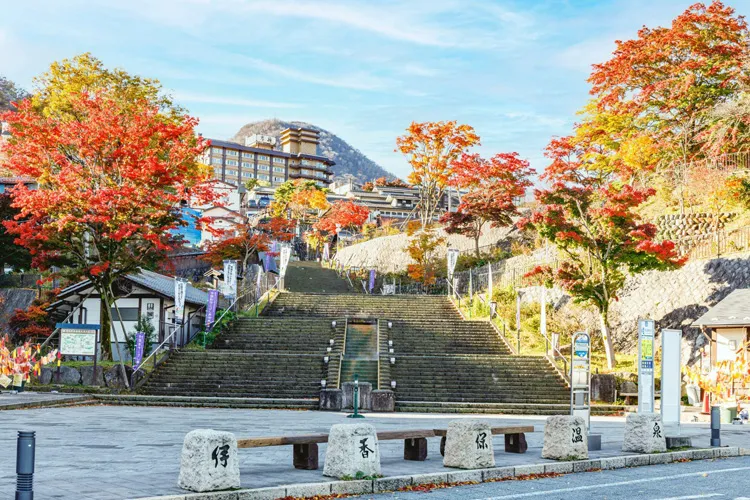
Gunma experiences four distinct and beautiful seasons, each offering its unique charm and activities.
- Spring (March - May): Mild temperatures (average 10-20°C/50-68°F), with cherry blossoms and fresh greenery. Perfect for exploring onsen towns. A light jacket is recommended.
- Summer (June - August): Warm and comfortable in higher elevations (average 20-28°C/68-82°F), ideal for hiking and outdoor escapes. Lower areas can be hot. Light clothing is advised.
- Autumn (September - November): Crisp and refreshing (average 10-20°C/50-68°F), renowned for spectacular autumn foliage in the mountains. Layers are essential.
- Winter (December - February): Cold with significant snowfall in mountainous areas (average -5 to 5°C/23-41°F), transforming onsen towns into picturesque winter resorts. Warm winter clothing, including waterproof outerwear, is essential.
When is the best time to visit? Autumn is highly recommended for its breathtaking fall colors. Winter offers a magical experience soaking in outdoor onsen amidst snow. Spring and summer are also great for enjoying nature and milder weather.
Explore Gunma's Regions & Highlights
Gunma is best explored by its distinctive areas, each with unique attractions.
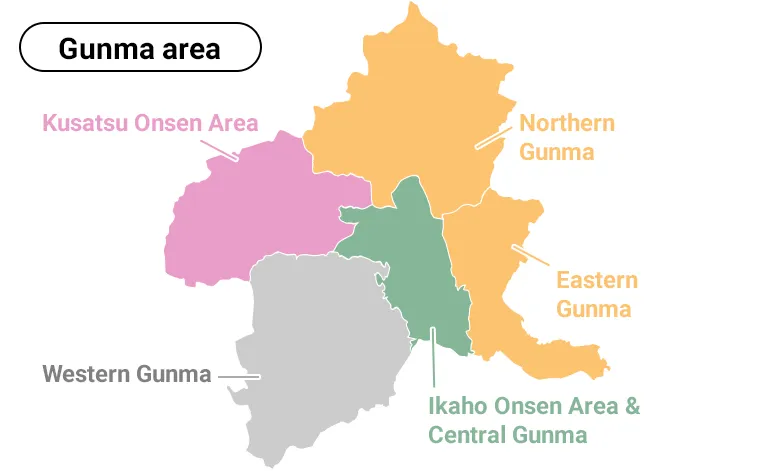
Kusatsu Onsen Area
- Highlights: One of Japan's most famous and beloved hot spring resorts. At its heart lies the Yubatake, a large open-air hot spring field where thermal waters are cooled and distributed. Experience the unique Yumomi (hot water stirring) traditional performance.
- Charm: Abundant, high-quality spring water, a lively town atmosphere, and a perfect blend of tradition and relaxation.
Ikaho Onsen Area
- Highlights: A charming hot spring town famous for its iconic stone steps, lined with traditional inns, shops, and arcades. Two types of spring water ("Kogane-no-yu" - golden water, and "Shirogane-no-yu" - silver water) offer different therapeutic benefits.
- Charm: Retro Japanese atmosphere, scenic views from the top of the stone steps, and a more intimate onsen experience.
Central Gunma
- Highlights: Home to the Tomioka Silk Mill, a UNESCO World Heritage site that played a pivotal role in Japan's modernization. Explore Mt. Haruna and its serene lake (Lake Haruna), offering picturesque views and outdoor activities.
- Charm: Industrial heritage, beautiful mountain scenery, and opportunities for outdoor recreation.
Eastern Gunma & Northern Gunma
- Highlights: The eastern part features more developed cities, while the north boasts stunning natural landscapes within Joshin'etsu Kogen National Park, including areas for skiing in winter and hiking in summer. Oze National Park, known for its beautiful marshlands, is also partially in Gunma.
- Charm: Expansive national parks, diverse outdoor adventures, and untouched natural beauty.
Find Your Perfect Gunma Trip
Gunma offers diverse experiences to suit every interest.
For Hot Spring Enthusiasts
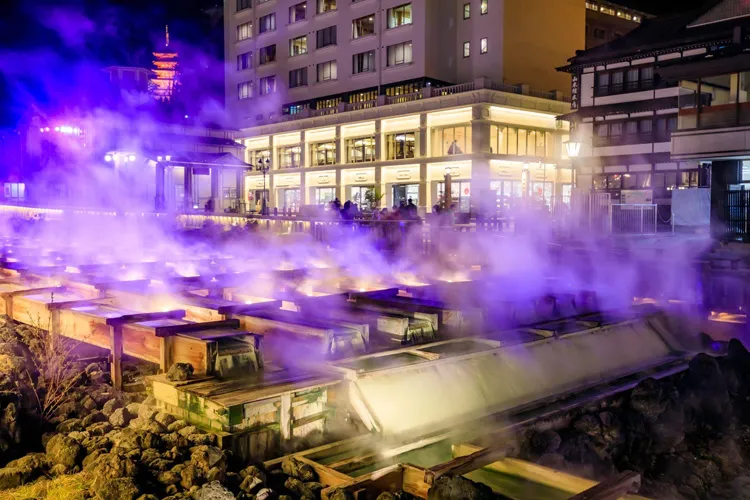
Gunma is the ultimate destination for onsen lovers!
- Kusatsu Onsen: Soak in highly acidic, therapeutic waters renowned for their healing properties. Experience different public baths and foot baths around the Yubatake.
- Ikaho Onsen: Enjoy the unique "golden" and "silver" waters. Stroll up the stone steps, stopping at various bathhouses and foot baths.
- Manza Onsen: Located high in the mountains, known for its strong sulfurous waters and spectacular snowy views in winter.
- Minakami Onsen: A cluster of hot springs in a scenic valley, offering river-side baths and adventure sports.
Onsen Etiquette Tip: Remember to thoroughly wash your body before entering the communal baths. Tattoos are sometimes restricted; check with the facility beforehand or look for private baths if available.
For Nature Lovers & Photographers
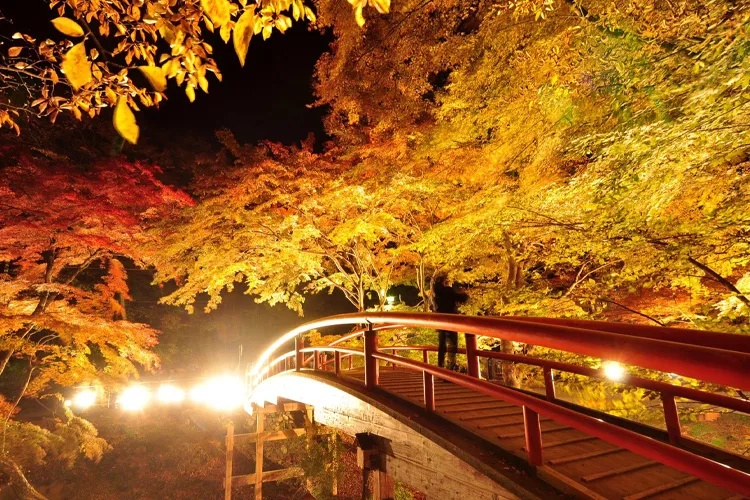
Capture breathtaking moments amidst Gunma's stunning landscapes:
- Autumn Foliage: Gunma's mountains, especially around Ikaho, Mt. Haruna, and within national parks, burst with vibrant colors from late October to November.
- Mount Haruna & Lake Haruna: A picturesque volcanic complex perfect for scenic drives, boating on the lake, and enjoying panoramic views.
- Joshin'etsu Kogen National Park: Offers diverse hiking trails, alpine flowers in summer, and excellent ski resorts in winter.
- Oze National Park: While mostly in Fukushima and Niigata, a part extends into Gunma, offering beautiful marshlands and unique flora (seasonal access).
For History & Culture Buffs
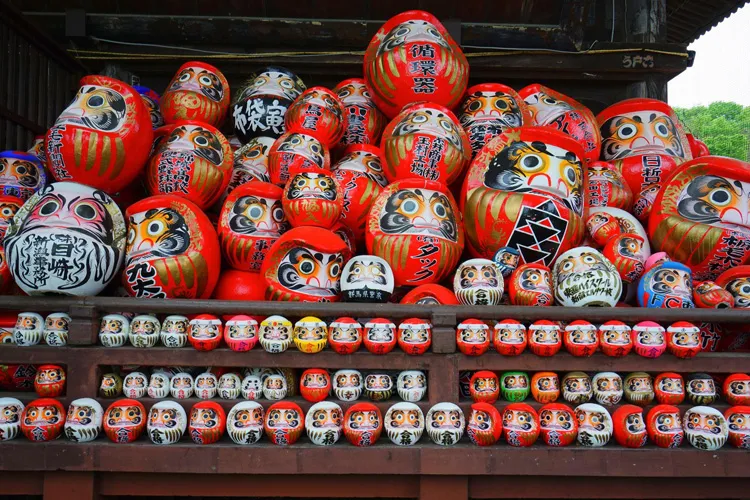
Delve into Gunma's rich past and unique local culture:
- Tomioka Silk Mill: A UNESCO World Heritage site showcasing Japan's pioneering role in the modern silk industry. A fascinating glimpse into industrial history.
- Daruma Dolls: Learn about the traditional Daruma doll craftsmanship, which originated in Takasaki. You can even try painting your own!
- Local Festivals: Experience traditional festivals like the Maebashi Tanabata Festival (July) or smaller local matsuri throughout the year.
Sample Itineraries
Need some inspiration? Here are a few suggested itineraries to help you plan your perfect Gunma adventure.
Example 1: The Classic Hot Spring Retreat
Focus: Kusatsu Onsen & Ikaho Onsen
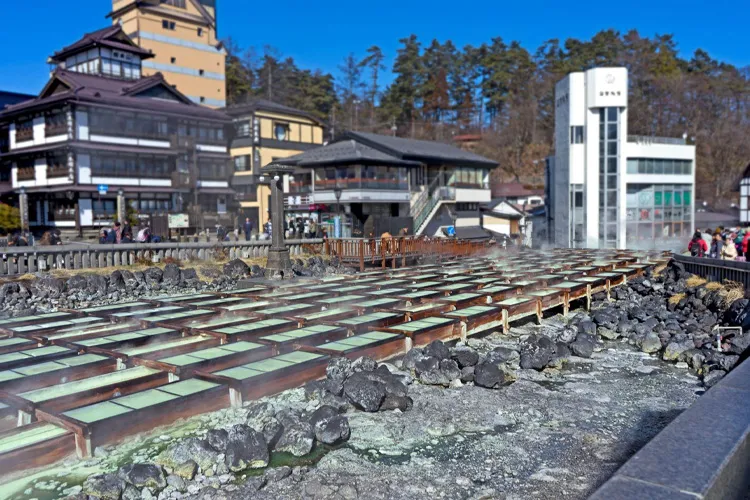
- Day 1: Arrive at Tokyo, take train/bus to Ikaho Onsen. Explore the stone steps, enjoy the onsen. Overnight in Ikaho.
- Day 2: Morning in Ikaho. Take a bus to Kusatsu Onsen. Explore the Yubatake, watch the Yumomi performance, enjoy various public baths. Overnight in Kusatsu.
- Day 3: Morning: Relax in Kusatsu or explore local shops. Afternoon: Return to Tokyo.
Example 2: Gunma Nature & Heritage
Focus: Mountains, Onsen & History
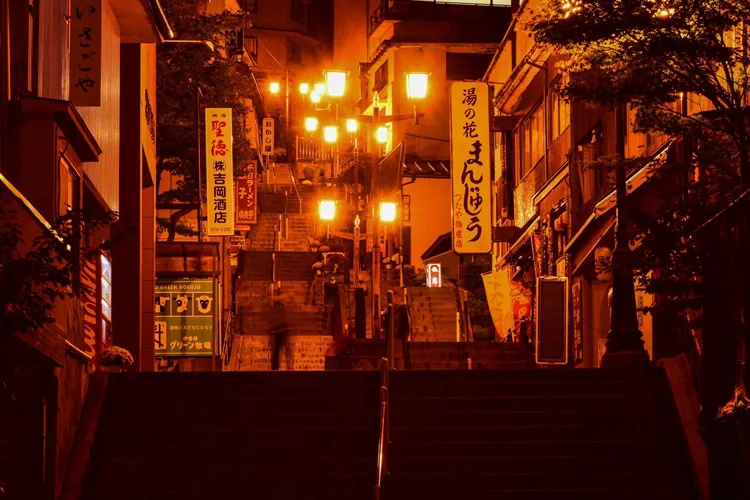
- Day 1: Arrive at Tokyo, take Shinkansen to Takasaki. Visit Tomioka Silk Mill. Transfer to Ikaho Onsen for the evening. Overnight in Ikaho.
- Day 2: Morning: Explore Mt. Haruna (lake, ropeway). Afternoon: Transfer to Kusatsu Onsen. Enjoy the Yubatake and public baths. Overnight in Kusatsu.
- Day 3: Morning: Relax in Kusatsu or take a short hike around. Afternoon: Consider a scenic drive or bus to a nearby natural spot or ski resort (seasonal). Overnight in Kusatsu or another onsen.
- Day 4: Morning: Last soak or souvenir shopping. Afternoon: Return to Tokyo.
Example 3: Winter Onsen & Snow
Focus: Winter Sports & Hot Springs
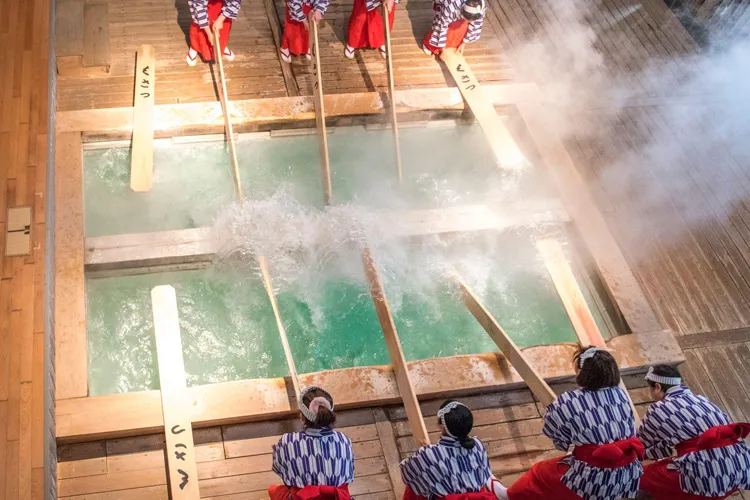
- Day 1: Arrive at Tokyo, take a train/bus to a ski resort in Northern Gunma (e.g., Minakami area, or direct bus to Kusatsu Kokusai Ski Resort). Enjoy skiing/snowboarding. Overnight near the resort or in a nearby onsen town.
- Day 2:Morning: More snow activities. Afternoon: Transfer to Kusatsu Onsen. Enjoy the magical snowy Yubatake and warm yourself in the onsen. Overnight in Kusatsu.
- Day 3: Morning: Explore snow-covered Kusatsu. Consider a short, easy snowshoe walk. Afternoon: Transfer to Manza Onsen for high-altitude onsen with spectacular winter views. Overnight in Manza.
- Day 4: Morning: Last relaxing soak in Manza. Afternoon: Return to Tokyo.
Essential Travel Tips
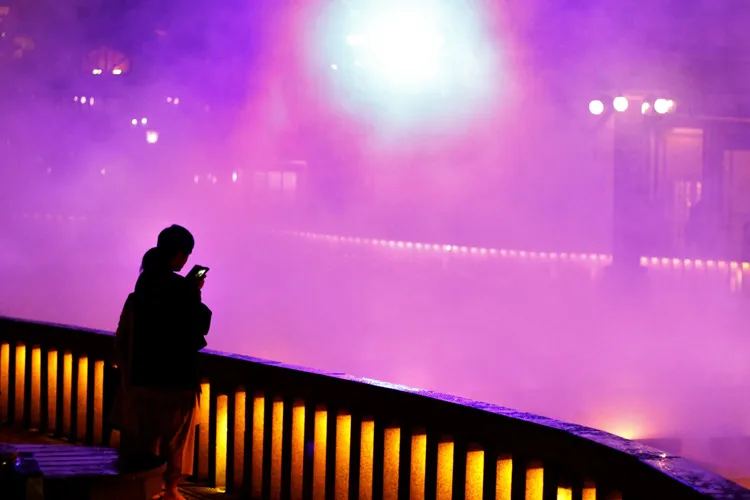
Make your trip to Gunma smooth and enjoyable with these practical tips.
Transportation Around Gunma
- Buses: Local buses connect train stations to onsen towns and major tourist sites.
- Rental Car: Highly recommended for exploring mountainous areas and reaching more remote natural spots, offering flexibility, especially for multi-day trips.
- Train: JR and private Tobu Railway lines connect major cities within Gunma and to Tokyo.
Accommodation
Gunma offers a wide range of accommodation:
- Ryokan (Traditional Japanese Inns): The most popular choice, especially in onsen towns, often including traditional multi-course dinners and breakfasts.
- Hotels: Available in larger cities like Takasaki and Maebashi.
- Minshuku & Guesthouses: Budget-friendly options in some areas.
Connectivity
- Free Wi-Fi: Available at major train stations, some hotels, and tourist information centers.
- SIM Cards & Pocket Wi-Fi: Recommended for consistent internet access, especially in more rural mountain areas.
Other Useful Information
- Comfortable Shoes: Essential for exploring onsen towns and for any hiking activities.
- Layered Clothing: Advised due to varying temperatures, especially when moving between different altitudes or seasons.
- Onsen Etiquette: Familiarize yourself with basic onsen rules for a respectful and enjoyable experience.
- Cash: While credit cards are widely accepted in larger establishments, having some cash is useful for smaller shops, local eateries, and bus fares.
Gunma Travel FAQ
- Are there any rules or manners for using Japanese hot springs (onsen)?
- There are some unique customs, but they’re easy to follow once you know the basics.
Gunma is famous for its hot spring towns like Kusatsu, Ikaho, and Shima. While relaxing, onsen etiquette is an important part of the experience:
- Wash your body thoroughly before entering the bath.
- Don’t put your towel into the water. (Place it on the side or on your head.)
- Swimsuits are not allowed. Baths are taken nude.
- Keep quiet and avoid splashing or swimming.
- Are there any rules for staying at a ryokan or guesthouse?
- Yes, there are some cultural customs that are good to know in advance.
- Take off your shoes at the entrance and wear indoor slippers.
- Remove slippers before stepping on tatami mats.
- Slide doors (fusuma) gently and quietly.
- Futons may be prepared by staff or set up by guests, depending on the inn.
- What kind of food is served at a ryokan? Is vegetarian food available?
- Ryokan meals usually consist of traditional Japanese kaiseki-style courses, featuring seasonal and regional ingredients.
A typical dinner may include:
- Grilled or raw fish
- Seasonal vegetable dishes
- Rice, miso soup, and pickles
- Meat dishes like sukiyaki or shabu-shabu
- A small dessert, often fruit or Japanese sweets

